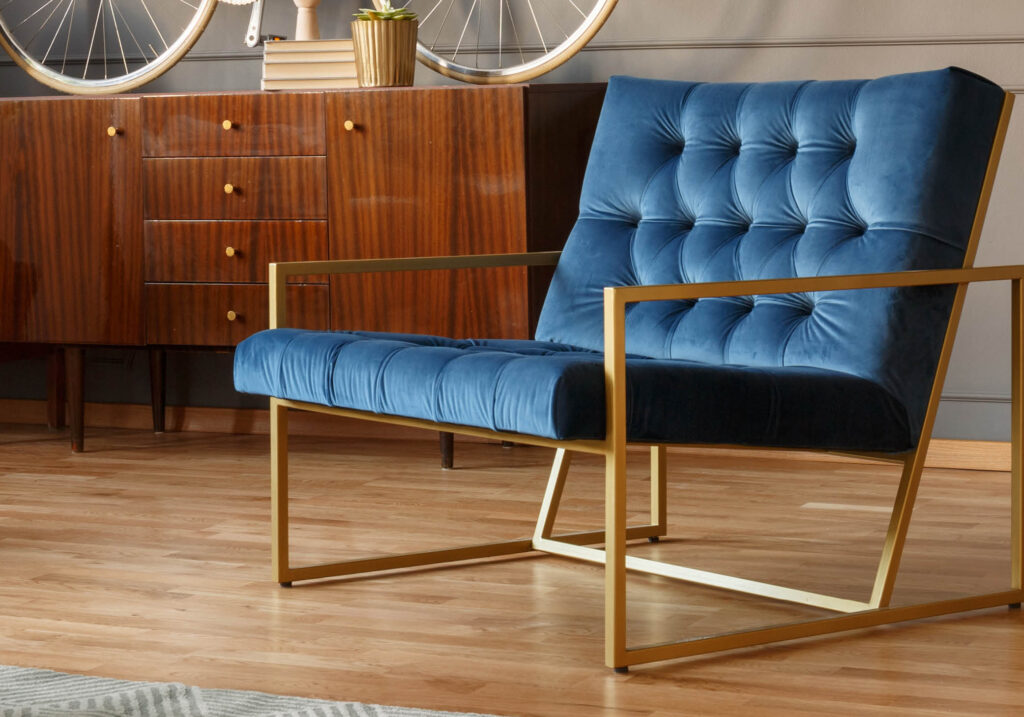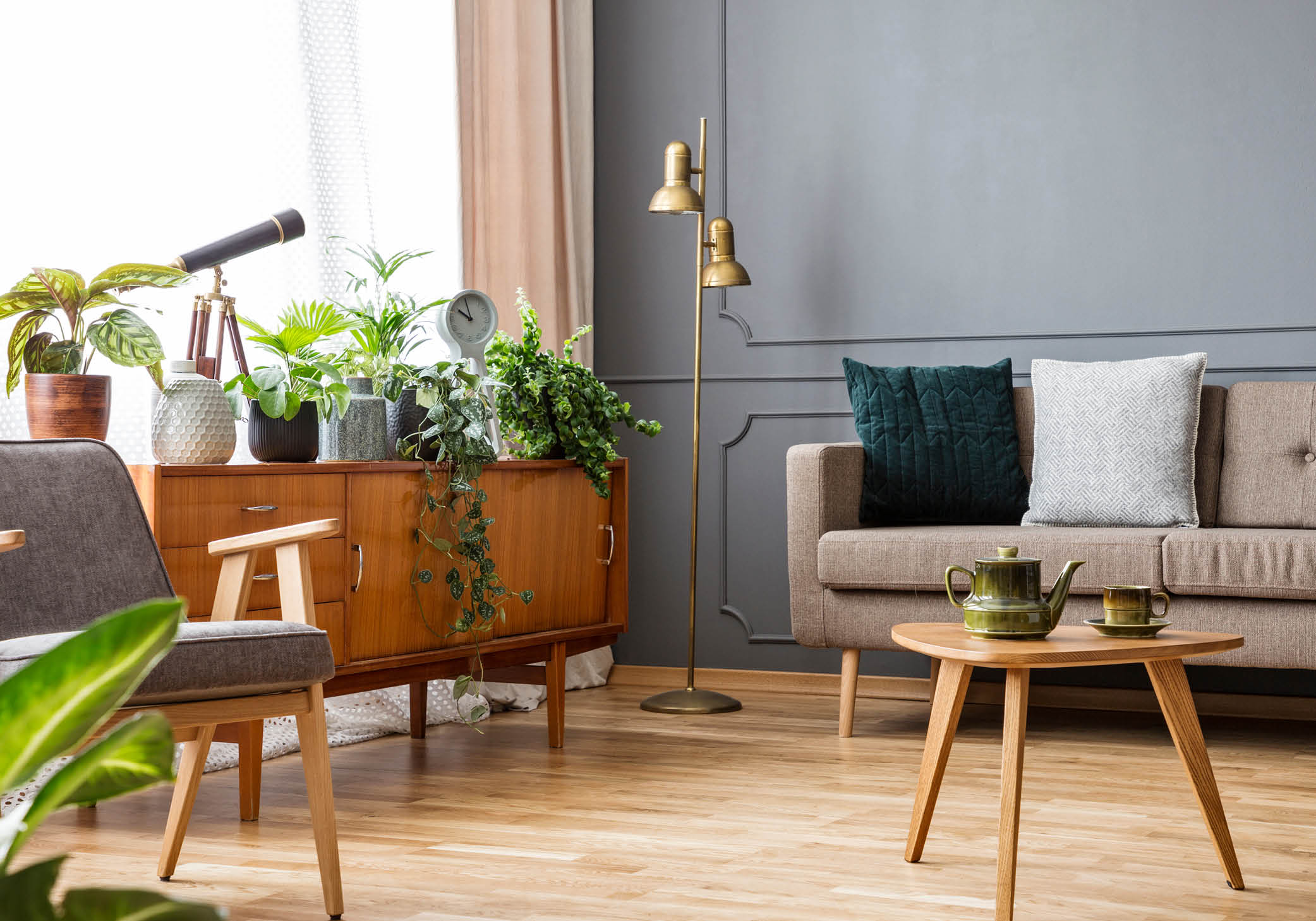Eco-friendly interior design choices, like selecting green furniture for the home, are increasingly popular. Buyers are choosing décor made from sustainable materials, vintage furnishings, or pieces utilizing environmentally friendly production methods. In fact, simply choosing a piece that is made locally or transported using high-efficiency practices can reduce the carbon footprint associated with that purchase. If you are interested in making more earth-friendly decorating choices, read on as we review some of the easiest and most affordable ways to find green furniture that you will love.
Check for the Seal
When buying new green furniture, check if the piece you are considering has a Sustainable Furnishings Council (SFC) seal. Member manufacturers pledge to take significant steps to reduce and minimize their carbon footprint. Cradle to Cradle certification is another excellent tool for determining if a particular piece of furniture was made sustainably. The Spruce explains: “The certification covers factors such as eco-friendly materials, renewable energy use, water use, and impact on people and communities.” The certification applies to items made anywhere in the world and can be found on products from furniture to eco-friendly window treatments and flooring.

Select Vintage or Secondhand Items
Martha Stewart Living is a big fan of buying “kinder” furniture when designing more eco-friendly rooms. Thrifting for secondhand finds, restoring family heirloom pieces, and shopping for vintage treasures are easy ways to add green furniture to your home. From Chesterfield sofas to Knoll tables, you’ll love incorporating storied pieces that will instantly give your space a bespoke feeling while supporting your eco-friendly design goals. Plus, a unique secondhand find is an instant conversation starter when entertaining.
Interior designer Rebecca Hay agrees that for anyone searching for a green way forward, vintage or secondhand furniture has numerous benefits beyond having little to zero carbon footprint. Hay relates to My Domaine: “‘Older craftsman furniture has been made to last, and has a longer lifespan over new big-box store furniture that is sometimes not well-built, causing you to shop again and throw away yet another piece of furniture into a landfill, and the imperfections in the furniture add to its character and can tell an old story in a new space.’”
Choose Furniture Made from Renewable Resources
Green furniture is crafted from materials that are recycled, repurposed, or exhibit other eco-friendly qualities, including being made from renewable resources. The Spruce notes that “bamboo grows quickly and easily, so it’s a good choice for a renewable resource.” Furniture made from wicker and rattan are also appealing options, according to the Magazine, for anyone looking “for ways to reduce the use of plastics and manmade materials in the home.”
When choosing wood furniture, the experts tell The Spruce that shoppers should focus on “solid wood like walnut, teak, oak, or maple.” As opposed to particleboard or MDF, solid wood furniture will last longer and does not rely on chemical adhesives to stay together.
Also, look for natural fibers on upholstered furniture. Jute is a durable, natural fiber often seen wrapping headboards and bed frames in rustic-chic bedrooms. Designer Niche Interiors explains to The Spruce that they are committed to sustainable design and focus on building “custom upholstered pieces made from natural latex foam wrapped in organic wool.” Furniture upholstered in linen can showcase a fabric that is biodegradable, versatile, and stylish. Organic linens in natural tones do not go through the bleaching processes common to pure white versions of the material and avoid the use of harmful dyes.
Support Sustainable Manufacturing
If possible, before purchasing new furniture, investigate a company’s manufacturing practices. Do they support fair trade policies? Do they work to mitigate potential harm to the community or the environment where the piece is produced? Looking for a sustainable certification may help answer these questions, but not always.
You’ll also want to focus on purchasing furniture that uses nontoxic stains, paint, or sealants; otherwise, you risk off-gassing as the new furnishings can release some unhealthy fumes into the air. As Niche Interiors tells The Spruce, they like “to avoid mass produced furniture upholstered with petroleum-based flame retardants,” opting instead for working with local artisans for handcrafted furniture that employ safe, organic elements.

Buy Locally
One way to ensure that your furniture is greener is to thrift from nearby sellers or buy from area craftspeople who build furniture using locally sourced renewable materials. Of course, that isn’t always an option. If you are hoping to acquire a new item that needs to be shipped, check how the company transports its goods to your area. Review their website to see if the company makes efforts to reduce packaging or strives for other efficiencies.
Rent the Trends
Generally speaking, designers will caution against decorating with the trends in mind. As the experts at My Domaine suggest, “focus on what you love—not what everyone else loves.” Following this mantra will help your space stand the test of time and reduce the waste that often comes with trying to keep up with the latest styles. However, if a trend has captured your imagination, there is a more sustainable way to test it in your home. Kimberly White, Head of Home Quality Standards & Design at Vacasa, tells The Spruce: “Renting furniture items is another trend that is in line with sustainable practices yet still allows consumers to enjoy the latest looks.”


